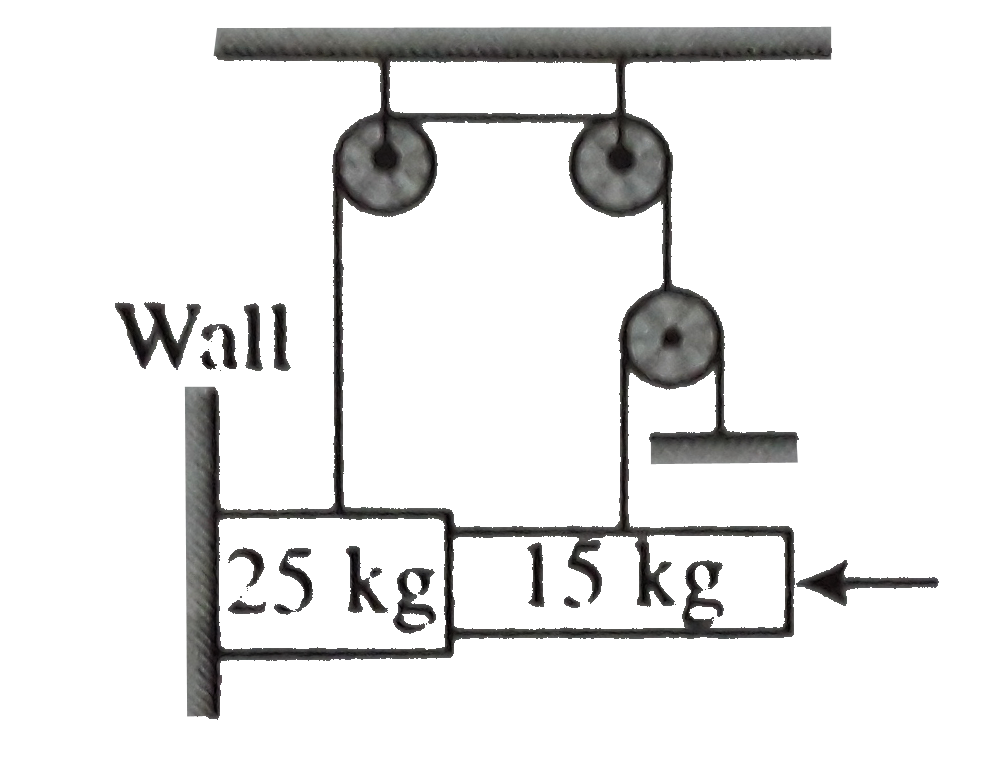Reflection and absorption coefficient of a given surface at 0∘C for a fixed wavelength are 0.5 (each). At the same temperature and wavelength the transmission (coefficient) of surface will be-
0.5
1
zero
in between zero and one
The correct Answer is:C
To find the transmission coefficient of a given surface at 0∘C for a fixed wavelength, we can use the relationship between the reflection coefficient (R), absorption coefficient (A), and transmission coefficient (T).
1. Understand the Coefficients:
- Reflection coefficient (R) = 0.5
- Absorption coefficient (A) = 0.5
- Transmission coefficient (T) is what we need to find.
2. Use the Relationship:
The relationship between these coefficients is given by the equation:
R+A+T=1
where R is the reflection coefficient, A is the absorption coefficient, and T is the transmission coefficient.
3. Substitute Known Values:
Substitute the known values of R and A into the equation:
0.5+0.5+T=1
4. Simplify the Equation:
Combine the reflection and absorption coefficients:
1+T=1
5. Solve for Transmission Coefficient:
To find T, subtract 1 from both sides:
T=1−1=0
6. Conclusion:
The transmission coefficient (T) of the surface at 0∘C for the fixed wavelength is 0.
Final Answer:
The transmission coefficient of the surface is 0.
---
- Reflection coefficient (R) = 0.5
- Absorption coefficient (A) = 0.5
- Transmission coefficient (T) is what we need to find.
The relationship between these coefficients is given by the equation:
R+A+T=1
where R is the reflection coefficient, A is the absorption coefficient, and T is the transmission coefficient.
Substitute the known values of R and A into the equation:
0.5+0.5+T=1
Combine the reflection and absorption coefficients:
1+T=1
To find T, subtract 1 from both sides:
T=1−1=0
The transmission coefficient (T) of the surface at 0∘C for the fixed wavelength is 0.
The transmission coefficient of the surface is 0.
Topper's Solved these Questions
- HEAT TRANSFERBook:RESONANCE ENGLISHChapter:HEAT TRANSFERExercise:Exercise-2
Explore 1 Video
- HEAT TRANSFERBook:RESONANCE ENGLISHChapter:HEAT TRANSFERExercise:Exercise-3
Explore 1 Video
- HEAT TRANSFERBook:RESONANCE ENGLISHChapter:HEAT TRANSFERExercise:Exercise-1
Explore 1 Video
- GRAVITATIONBook:RESONANCE ENGLISHChapter:GRAVITATIONExercise:Exercise
Explore 21 Videos
- KINEMATICSBook:RESONANCE ENGLISHChapter:KINEMATICSExercise:Exercise
Explore 65 Videos
Similar Questions
If the absorption coefficient and reflection coefficient of a surface of a body are 0.4 and 0.6 respectively then:-
View SolutionThe ratio of the Emissive power to the absorption power of all substances for a particular wavelength is the same at given temperature. The ratio is known as
View SolutionCalculate the coefficient of performance of refrigerator working between the temperatures 0∘Cand30∘C.
View SolutionThe coefficient of friction between two surface is 0.2. The maximum angle of friction is
View SolutionWavelength of Kα line of an element is λ0. Find wavelength of Kβ - line for the same elemetn.
View SolutionWhen a centimeter thick surface is illuminated with light of wavelength λ, the stopping potential is V. When the same surface is illuminated by light of wavelength 2λ, the stopping potential is V3. Threshold wavelength for the metallic surface is
View SolutionWhen radiation of the wavelength λis incident on a metallic surface ,the stopping potential is 4.8 V. If the same surface is illuminated with radiation of double the wavelength ,then the stopping potential becomes 1.6 V.Then the threshold wavelength for the surface is
View SolutionThe activation energy of a gas reaction is 30 kcal/mol in the temperature range 0∘C to 60∘C. The temperature coefficient of the reaction is :
View SolutionIf the coefficient of friction between all surface figure is 0.4 then find the minimum force F to have equilibrium of the system.

View SolutionIf η represents the coefficient of viscosity and T the surface tension. Then the dimensions of T/η are same as that of
View Solution